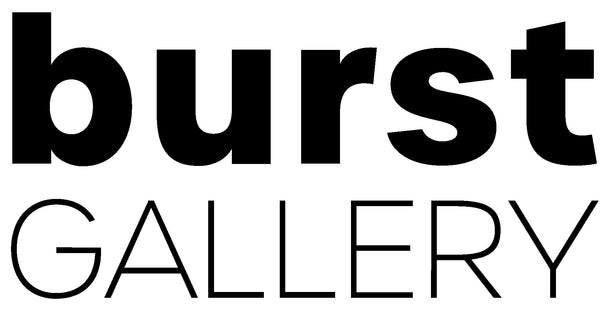What kind of collector are you?
People tend to get into collecting music prints for one of two reasons: either as a financial investment or because they are obsessed with certain bands and artists. Deciding which one you are will have an enormous impact on what you buy and how much you might spend on a particular piece.
If you’re buying posters as part of a business, you’ll need to develop a working knowledge of what’s hot and what’s not. You’ll also need to develop an eye for detail and be able to tell a reproduction from an original. On top of that, you’ll need a decent budget, as original, vintage posters can fetch significant sums of money.
However, if you’re purely interested in collecting posters of your favourite bands and aren’t interested in their monetary value, the road is much easier. There are plenty of prints and reproductions out there, which cost a lot less but give the same sense of satisfaction.
Concert posters or album posters?
For the serious collector, concert posters are a better investment. These are often more difficult to find and far rarer than posters for forthcoming albums or singles.
The Beatles Concert prints tended to be printed as part of an exceedingly small run, to promote a specific gig on a particular date. Once the concert was over, these were often torn down and destroyed, making them incredibly scarce.
Concert posters were also mostly posted outdoors on billboards, walls, windows and even bus-stops. As a result, they were exposed to the elements, and many deteriorated to the point that they became little more than litter. Finding a pristine poster, or one that’s at least in excellent condition is something of a Holy Grail in collecting circles.
Another thing to look out for is concert posters for bands before they hit the big time. Finding an original poster advertising The Rolling Stones appearing at The Crawdaddy Club in 1963 is going to have far more monetary value than a poster for one of their world tour dates in the mid-90s.
Perfect Imperfections
According to legend in literary circles, there are an estimated 500 copies of the first edition of Harry Potter and the Philosopher’s Stone that were printed containing typos or errors. Because of their scarcity, these can now fetch tens of thousands of pounds on the collector’s market.
The same is true of music prints. Those that were released with spelling mistakes, misinformation or errors are highly prized among those in the know.
Equally valuable, but more common, are posters for gigs that never happened. These tend to capture particular moments in time, such as the Sex Pistols’ gig at Glasgow’s Apollo, which was called off following the band’s infamous appearance on the Bill Grundy Show. ‘Cancelled’ notices were plastered across any posters found in the city, inadvertently increasing their future worth.
Another more morbid example surrounds Nirvana’s In Utero tour. Their final gig was played at Terminal Einz in Berlin, in March 1994, before Kurt Cobain took his life, just weeks later. While posters for that concert are eminently collectable, so too are the posters for the dates that were subsequently cancelled after the singer’s untimely death.
Legendary gigs
Certain gigs and venues are considered to be gold within collector circles. Sometimes these become prominent because of a particular event or because of the calibre of bands playing. Among the most highly-prized music prints for this category are big-name bands and artists playing at London’s Marquee Club. While it’s hosted the likes of David Bowie, The Rolling Stones, Led Zeppelin and Jimi Hendrix, posters for these gigs are like proverbial hen’s teeth and can exchange hands for thousands of pounds.
Similarly, posters for landmark concerts, such as Woodstock, Dylan’s ‘Judas’ appearance at the Newport Folk Festival and The Doors’ show at The Roundhouse are incredibly sought after.
For collectors, this means a sound knowledge of gigs and concerts, beyond their usual sphere of musical interest.
Signed or unsigned?
Signed posters are far more collectable than unsigned. However, dedications do reduce a signed poster’s worth, unless the recipient was also someone of note.
As line-ups change, so too do the signatures on posters. As a rule of thumb, original line-ups are the most collectable, such as a Rolling Stones poster with Brian Jones’ signature on it or Oasis poster featuring the original members of Noel, Liam, Bonehead, Guigsy and Tony McCarroll.
While there are plenty of apparently authentic signed posters on the Internet, it’s worth being on the lookout for fakes. Any seller worth their salt will supply you with a Certificate of Authenticity or at least have some evidence of the poster’s provenance.
Research
Before you go anywhere near an auction, it’s worth getting as much information as you can about the piece (or pieces) you’re after. In this instance, the fans can be your best resource. There are countless fan forums on the Internet, where the diehards swap stories and information about their idols and the gigs they’ve played.
You’ll also find some superb reference books, which will tell you the ins and outs of collecting, whether your interest is serious or casual. The Collectors to Psychedelic Rock Concert Posters and Handbill 1965 – 1973, by Eric King, is essential reading for anyone looking to turn their passion into a business. However, if you’re more interested in the history and the art, rather than the financial aspect, check out Squeegee!! The European Gig Poster Movement, by Joris Diks and Senor Burns or Oh So Pretty: Punk in Print 1976 – 1980, by Toby Mott and Rick Poyner.
Other collectors can be equally useful, and most are happy to pass on what they know. At musicposter.co.uk, we’re always pleased to meet other poster enthusiasts and discuss what’s come on our radar.




